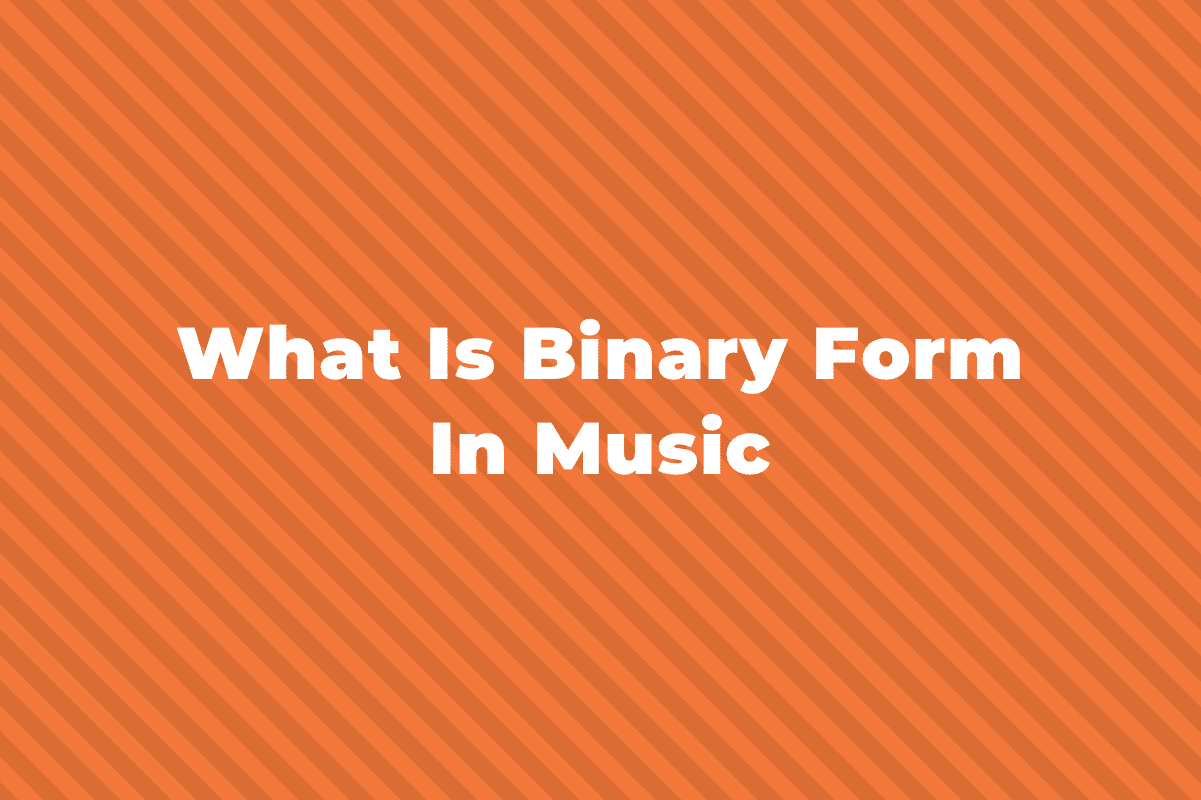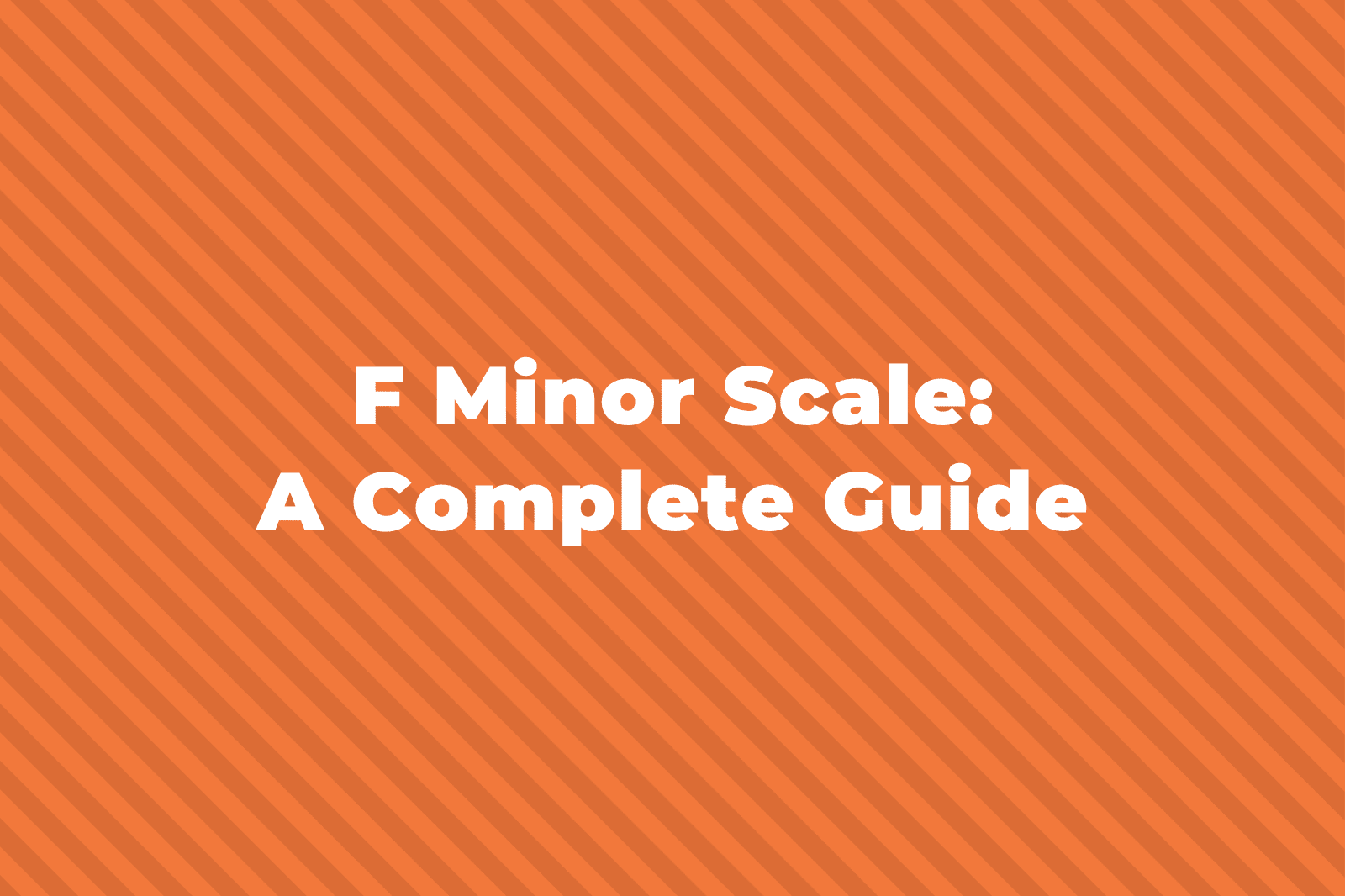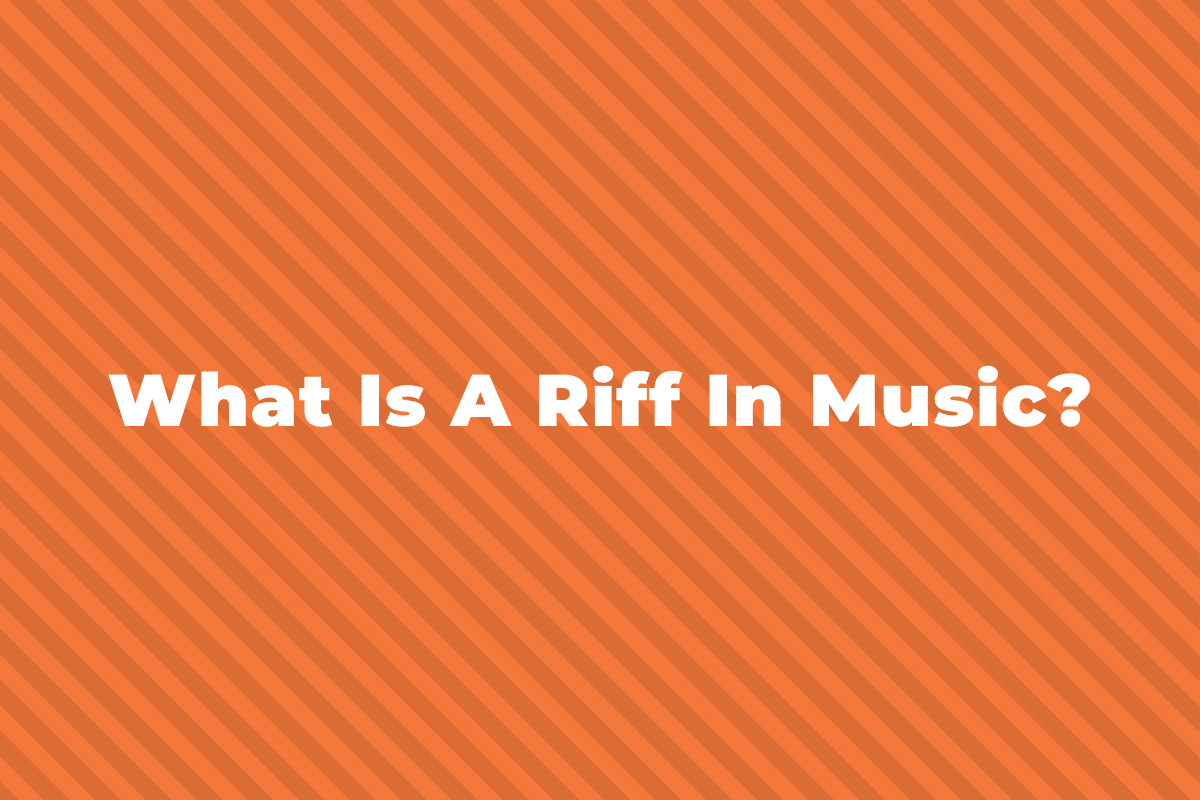Without intervals, we wouldn’t have melody, chords, or scales. They really are one of the foundations of music.
In this guide to music intervals, we’re going to cover what intervals are in music as well as all the different ways to categorize them and name them. But first, let’s start with what is an interval.
What is an Interval in Music?

An interval in music is defined as a distance in pitch between any two notes.
The larger the interval between two notes, the greater the difference in pitch between the notes.
And vice versa, the smaller the interval between two notes, the smaller the pitch between the notes.
There are three parts to the way we describe an interval:
- The distance of the interval
- The type of interval (the interval quality)
- Is the interval harmonic or melodic?
Before we talk about those, though, we’re going to cover the two smallest types of interval: semitones and tones.
Related: Check out our guide to pitch in music here.
Semitones and Tones (Half Steps and Whole Steps)
Semitones and tones, or half steps and whole steps, are the building blocks of intervals.
We use different combinations of them to make up all the different types of scales and chords that make music sound so different.
Semitones: The smallest possible interval
The smallest possible interval (in western music anyway) is a semitone, or in the US it’s called a half step. A semitone is the very next higher or lower note.
For example, from E to F or from C to C sharp (C#) on a piano keyboard.
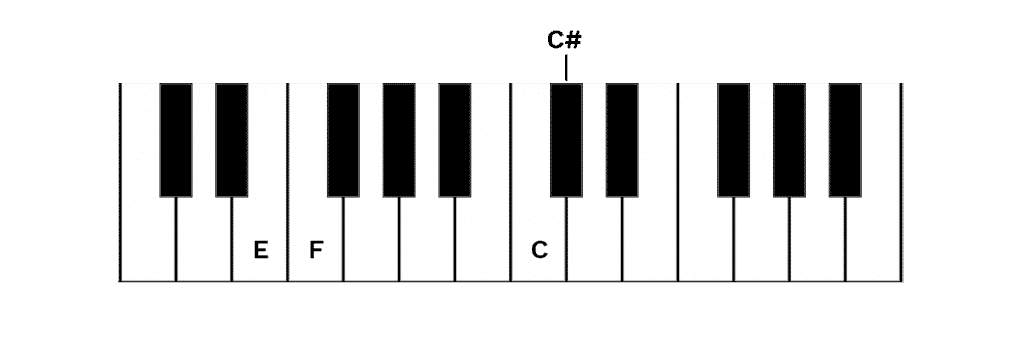
What are Tones (Whole Steps)?
The word ‘semi’ means half (it’s the same semi that we get semiquaver from which is ‘half’ of a quaver) so we could think of the word semitone as ‘half a tone’.
A tone or ‘whole step‘, therefore, is an interval of two semitones.

Names of the Intervals
Now that we know about the two smallest intervals, semitones and tones, we can start looking at some larger intervals and how we describe them.
We describe intervals using numbers depending on how many letter names of the musical alphabet there are between the two notes.
For example, the notes C and D are two letter notes apart and so is an interval of a 2nd.

But if we look at the notes C and E they are three letter notes apart and so this interval is a 3rd.

The notes C to F are four letter notes apart and so would be a 4th.

This just carries on, C to G is five letter notes and so would be a 5th.

C to A is six letter notes and so would be a 6th.

C to B is seven letter notes and so would be a 7th.

Lastly, C to the C above it is eight letter notes and so is an interval of an 8th.

But we don’t tend to call this interval an 8th and instead we call it an octave or 8ve. They both mean the same thing.
The shape octagon has eight sides and the interval octave is eight notes higher.
What is a Unison Interval?
We can also have intervals that are the same note.
For example, two different instruments might play exactly the same note in a piece of music.

This interval is called a unison.
When we write a harmonic unison interval (more on harmonic and melodic intervals shortly) we write the notes next to each other.
We’ll cover this in the section on harmonic and melodic intervals though.
Interval Quality
Now we’re going to cover the interval quality.
As we don’t just refer to intervals with the number, we also refer to the type of interval.
I’ll explain why we need to distinguish the interval quality with the example below.
Both of these intervals are a third:

In the first example, C to Eb is three letter notes: C – D – Eb and so is a 3rd.
And in the second example, C to E natural is also three letter notes: C – D – E and so is a third.
We need to distinguish the type of interval (quality) to differentiate between them both.
What are the Types of Interval Quality?
There are five different types of quality of interval which are:
- perfect intervals
- major intervals
- augmented intervals
- minor intervals
- diminished intervals
We’ll go into them now and I’ll explain how to know or work out which of these five types any given interval is.
Before we dive into the first two types of interval, perfect intervals and major intervals, we’re going to look at the major scale.
Every note in a major scale is either a major interval or a perfect interval (starting from the tonic note).
Below are all the intervals in a major scale.

Perfect Intervals
There are three intervals that are what we call perfect intervals:
- a perfect 4th
- a perfect 5th
- a perfect 8ve (or octave)
To be a perfect interval the upper note has to be in the major scale of the lower note.
If the interval is a 4th, 5th or 8ve and isn’t in the major scale, then it’s not a perfect interval.
For example C to F# is a 4th but is not a perfect 4th as F# is not in C major scale.

Side note: C to F# is actually what we’d call an augmented 4th (or tritone) but more on that shortly.
Below are all the perfect intervals:

Next, we’ll look at the other intervals in a major scale which are major intervals.
Major Intervals
There are four intervals that are called major intervals:
- a major 2nd
- a major 3rd
- a major 6th
- a major 7th
So if the upper note of an interval is in the major scale of the lower note (and it’s not a 4th, 5th or 8ve) then it will be a major interval.
When answering questions about intervals, you should always work out the number of the interval first by using the lower note as number one and counting how many letter notes there are to the higher note.
Then, if the upper note is in the major scale of the lower note, you know that it is going to be either a major interval or a perfect interval.
If it’s a 4th, 5th, or an 8ve, then it will be a perfect interval, if it’s another interval, then it will be a major interval.
Here’s C major scale with the major intervals marked:

This is the case for every major scale, not just C major.
If the lower note is the tonic and the upper note is in the major scale, it will always either be a major or perfect interval.
Minor Intervals
If we take any of the major intervals we looked at above and make them smaller by one semitone (half step), then they now are minor intervals.
For example, if we took C to E, which is a major 3rd, and flattened the E to make it an Eb, it now becomes a minor 3rd.

Because there are only four major intervals, there are also only four minor intervals possible, which are:
- minor 2nds
- minor 3rds
- minor 6ths
- minor 7ths
Here is F major scale but with the 2nd, 3rd, 6ths, and 7th notes flattened to become minor intervals.

So to recap:
- If the upper note is in the major scale of the lower note, it will be either a major or perfect interval
- If it’s in the major scale and it’s a 4th, 5th, or an 8ve, then it will be a perfect interval
- If it’s in the major scale and is a 2nd, 3rd, 6th or 7th, then it will be a major interval
- If it’s a semitone lower than a major interval, then it will be a minor interval
Augmented Intervals
An interval becomes augmented when we extend a major or perfect interval by one semitone (half step) without changing the letter name.
So if we took a major second like F to G and made the G a G#, then we’ve made the interval wider by one semitone, and so it’s now an augmented 2nd.

It’s the same with perfect intervals, for example, the interval F to C is a perfect 5th, but if we make it F to C# (widening the interval) then it’s now an augmented 5th.

So here is F major scale again, but with all the notes raised by one semitone, and they’re now all augmented intervals.

Hopefully, you’re wondering what happens if we flatten a perfect interval by one semitone.
If we do that, then we have made the next quality of interval a diminished interval.
Diminished Intervals
If we flatten any of the three perfect intervals – 4ths, 5ths, or 8ves by a semitone, they don’t become minor, they become diminished intervals.
Let’s take the two notes, A and D, which is a perfect 4th.
If we were to flatten the D to make it a Db, it would now become a diminished 4th.

We can also flatten minor intervals by a semitone and they too become diminished.
For example, E to D is a minor 7th, but if we make the D one semitone lower to a Db, it then becomes a diminished 7th.

So just remember that:
- if we flatten a perfect interval by one semitone (half step) it becomes a diminished interval
- If we flatten a minor interval by a semitone (half step) it becomes a diminished interval
- If we flatten a major interval by a tone (whole step) it becomes a diminished interval
Music Intervals Chart
To help make sense of all the intervals here’s a chart with the number of semitones (half-steps), the name, the abbreviation and an example of the notes of all the intervals.
| Music Intervals Chart | |||
|---|---|---|---|
| Semitones | Interval | Abbreviation | Example |
| 0 | Unison | PP or P1 | C – C |
| 1 | Minor 2nd | m2 | C – Db |
| 2 | Major 2nd | M2 | C – D |
| 3 | Augmented 2nd | A2 | C – D# |
| 3 | Minor 3rd | m3 | C – Eb |
| 4 | Major 3rd | M3 | C – E |
| 4 | Diminished 4th | D4 | C – Fb |
| 5 | Perfect 4th | P4 | C – F |
| 6 | Augmented 4th | A4 | C – F# |
| 6 | Diminished 5th | D5 | C – Gb |
| 7 | Perfect 5th | P5 | C – G |
| 8 | Augmented 5th | A5 | C – G# |
| 8 | Minor 6th | m6 | C – Ab |
| 9 | Major 6th | M6 | C – A |
| 10 | Minor 7th | m7 | C – Bb |
| 11 | Major 7th | M7 | C – B |
| 12 | Perfect 8ve | P8 | C – C |
Compound Intervals
All the intervals that we’ve looked at up until now have been up to one octave.
These are called simple intervals.
But, you can also get intervals that are larger than one octave.
For example, C to E the octave above.
These types of intervals are called compound intervals.
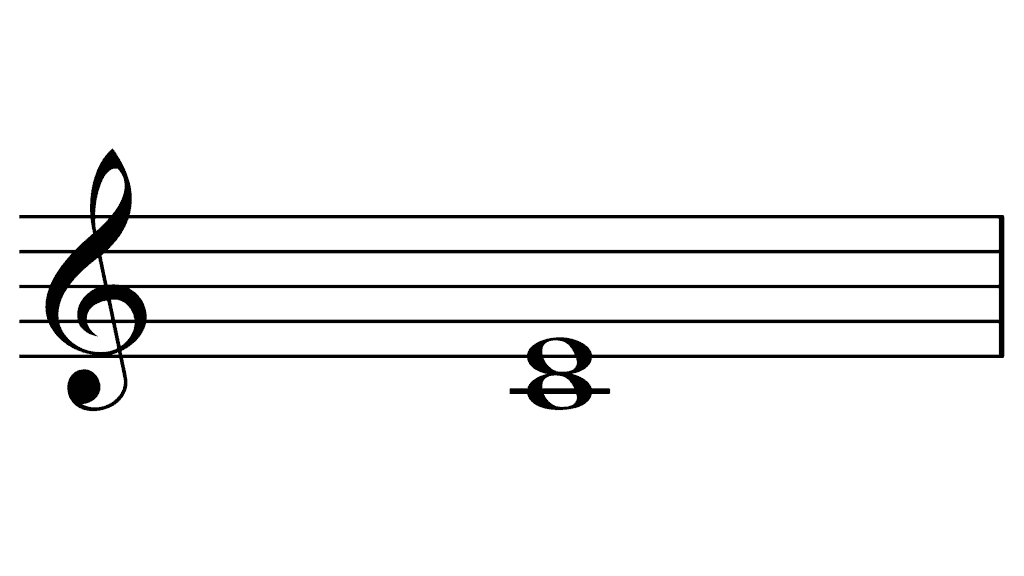
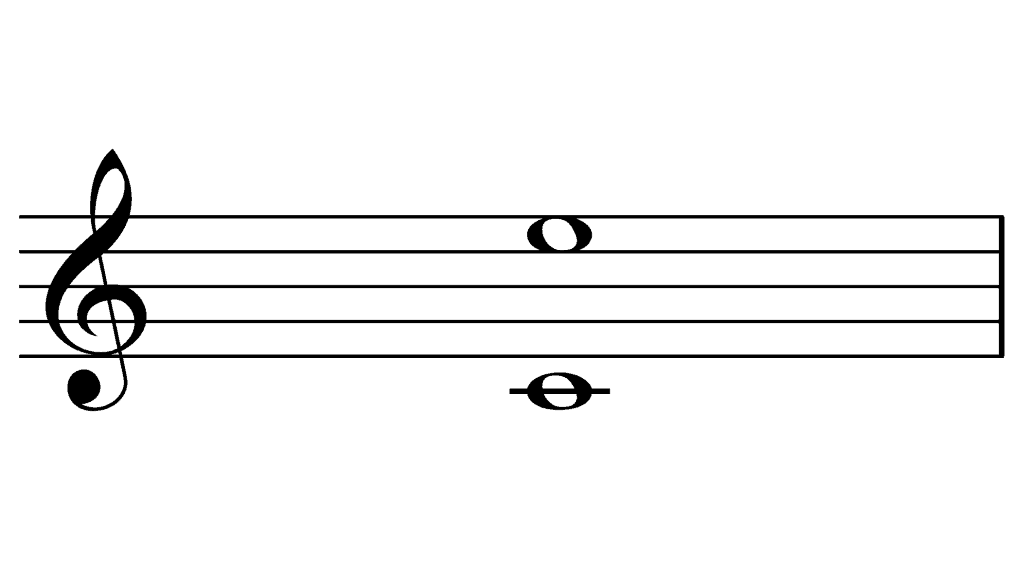
There are two different ways to name compound intervals which I cover in more depth in my compound intervals guide here.
Harmonic and Melodic Intervals
As well as categorizing intervals into their interval numbers (2nds, 3rds, 6ths etc) and by the interval quality (major, minor, perfect etc) we can also categorize intervals into two other groups:
- Harmonic intervals
- Melodic intervals
These types of intervals are not to be confused with harmonic and melodic minor scales, those are totally different but we use the same words.
What are Harmonic Intervals?
Harmonic intervals are how we describe two notes that are played at the same time.
They are played in harmony, and so are a harmonic interval.

What are Melodic Intervals?
The opposite of a harmonic interval is a melodic interval which is where the two notes are played one after the other.
They are part of a melody, and so are a melodic interval.

Conclusion
That about sums up musical intervals for now.
I’ll be updating this post with some more examples when intervals can get a little bit more complicated with double flats and double sharps and key signatures.

